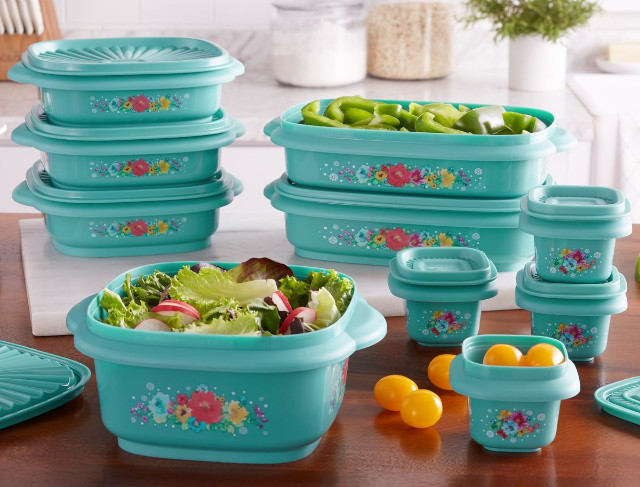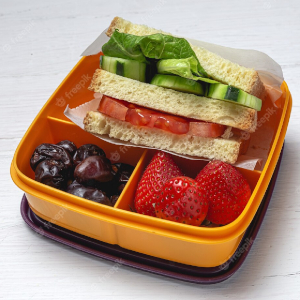A string of recent scientific studies has sought to generate shock and awe among consumers. They claim plastics that may come in contact with our food, may contain compounds that have been identified as dangerous carcinogens. Are there BPAs in your pantry cupboard?
 Tupperware matched set: The kind many folks still give as shower and wedding gifts.
Tupperware matched set: The kind many folks still give as shower and wedding gifts.
But remember there are many other brands of plastic food storage containers…
They have also been been associated with a higher risk of a wide range of diseases and conditions, such as infertility, altered fetal growth, attention-deficit/hyperactivity disorder and aggression among children, polycystic ovarian syndrome, endometriosis and heart failure.
These chemicals come generally from one well-known class: bisphenols (BPAs). Until recently, they were used to make plastics such as Tupperware more flexible, durable and shatter-resistant.
But they can also leech out of the plastic into the foods they are supposed to be protecting, and from there into our bodies.
The official position
Although BPAs have relatively recently been banned (2010) from use in plastic products sold in Canada, and more recently the U.S., you may still have some BPA-containing bowls in your pantry. How about that old, faithful milky-white tub that’s perfect for so many food storage issues you face every week. You know, the one you got as a wedding present all those years ago – before they banned BPAs.
There are many websites out there purporting to advise on how to care for your plastic food containers. A really good one can be found here…
Age is a central concern
The age of a plastic container is crucial – more so the older it gets. Flexible plastics, even those designed to store foods, become unstable over time, depending on their exposure to chemicals in the foods and even light. Exposure to sunlight or strong UV can accelerate the breakdown of food containers dramatically.
Consider temperature
As we hinted above, age time and temperature can effect how potentially dangerous a plastic storage container may be.
Age is one of the most common dimensions in which plastic containers can become unstable and start to break down. Nothing is forever. In fact some plastics begin to break down as soon as a few years after they are manufactured.
If your plastics begin to show discolouration, scratches, cracks, permanent deformations or other defects that show up over time and use, Tupper says it’s time to replace them. Deformed, poorly sealing lids are the first, most obvious sign that a plastic container is ready to toss.
Storage duration
Remember also that – unlike glass and metal – plastics ‘breathe’, a condition often overlooked by users and manufacturers. That means they allow chemicals in the air around them to filter through to their contents. The most serious consequence of that tendency is simply oxidation – of both the food and the container. Oxidation breaks down plastics as surely as many other causes.
Long-term storage in plastics can result in stale, plasticy or otherwise damaged food. It might not be outright toxic to you, but it sure isn’t much fun to eat anymore.
And the longer you store foods susceptible to freezer burn in unstable older containers, the more likely they are to ‘burn’.
Temperature amplifies the troubles
Placing foods still hot from cooking directly into plastic storage containers can amplify the effects of leeching.
And a tendency for users to heat stored foods by microwaving them directly in their plastic containers can present the same issues.
And remember: a label on a plastic container saying it’s microwave safe doesn’t necessarily mean it’s food-safe. It usually just means the container won’t melt or otherwise become structurally unstable if you microwave in it.
Just one more thing
(A sop to Colombo fans, there…) Food composition is an important consideration. Extremely acidic or alkaline foods will damage plastic food containers faster than other environmental factors. The cardinal rule here is, don’t leave acidic foods in plastic containers to ferment or age for long periods of time. Pickles pose definite problems. So, too, do tomatoes and citrus.
So there you have it…
The straight-up low-down on the dangers of BPAs in food storage containers. Over and above the foregoing, common sense should be your guide to using flexible plastic food storage containers…
~ Maggie J.

